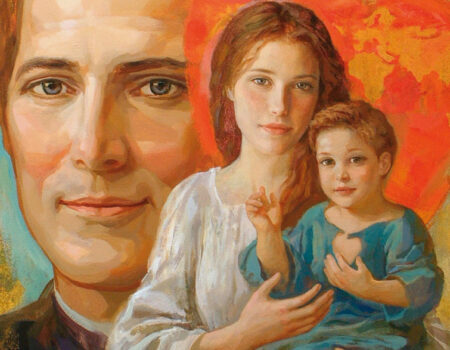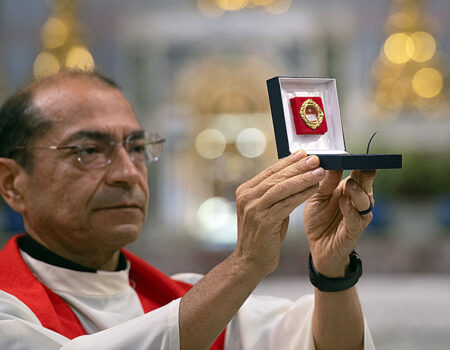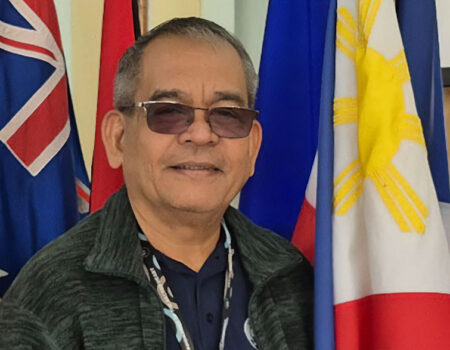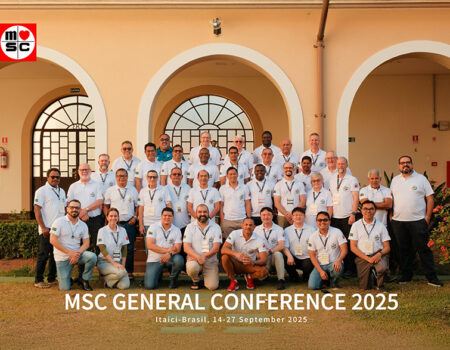The mission in Papua became a social model: church, clinic and school.
Saturday October 11, 2025
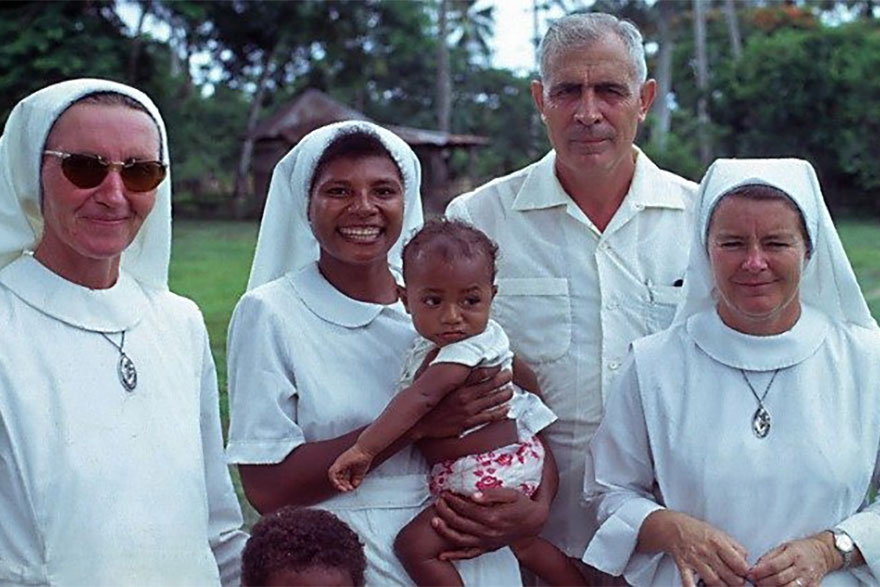
The Missionaries of the Sacred Heart began construction of a local church, which now has priests, bishops, a cardinal, and even a blessed person born in the country. The birth of the local church, the creation of health clinics, and the building of schools gave rise to this social structure that is still called “Mission” today.
Collaboration with Vatican News.
In the late 19th and early 20th century, the Missionaries of the Sacred Heart arrived in Papua New Guinea (See: Leo XIII’s request to Jules Chevalier: Creating a ‘local Church’ in Papua New Guinea), at which time Papuan society did not exist as such. The inhabitants at that time lived in tribes, some 600 of them, at odds with each other, so that in general few were organised in villages, many houses were scattered over the territory, to avoid mass attacks. The missionaries established the site of their missions, a small church, among these ‘population zones’, which began to become a point of reference for the natives.
Medicine was key to Papua’s development. Little by little, the missionary work developed and the missionaries realised that the next step was to help them with their health system. The witch doctors had great power and were entrusted with the healing of the people. The arrival of the missionary sisters with medical knowledge was key to the development of this people. The first, Daughters of Our Lady of the Sacred Heart, arrived in August 1887. Father Navarre, msc, newly appointed Bishop, told them: “Your time has come, the Mission needs you and is waiting for you”. They were Mother Ligoria and Sisters Clara, Marta and Magdalena, whom the natives called “Iviao-love” (holy maidens).
From dispensaries to health centres. Thus began the construction of dispensaries next to the church, which were transformed into real health centres, where the population was attended to. Even today, in Veifa’a, a small first aid station is still named after Father José Díaz, msc, (Father Pin). Help from Europe was essential at that time; medicines were unknown in those lands and the only way to obtain them was thanks to European generosity.
The creation of training centres for nurses. The seeds of the new society begin to sprout. The first children are growing up, and the example of religious men and women is spreading among the population, and they are interested in learning what they do. Another key to the development of Papua New Guinea was the creation of training centres for local nurses. Schools had to be set up to train the children so that in the future they would be in charge of their own lives.
The testimony of the native Papuan nuns. Nurse Mona Papu, Sister Mona, is today the director of the Inauaia Health Centre, which was built by Father Xavier Vergés, a Missionary of the Sacred Heart, who was in Papua New Guinea for almost 40 years. She was a child when she came into contact with the mission, where she studied and felt a vocation to help her people. Something similar happened to Papuan Sister Elizabeth lnapi, Daughter of Our Lady of the Sacred Heart who, in a letter to Father Paco Blanco, msc, Provincial Superior of Spain, says: “I owe my vocation to Father Vergés. I met him when I was 4 years old, it was his example that attracted me to religious life”. Vergés himself “built the mission, the church, the school, the sisters’ convent, the hospital”.
Education, another key to development. The church and the health clinic are now joined by the school, which, together with the huts built with materials from the forest, organised in two rows, make up the structure of the new villages. Today, this social structure is still called the ‘Mission’ (church, health centre and school). There is no local administration in the style of town councils, the organisation is still based on tribal clans. The parish community is the only ‘transversal’ entity that allows for joint actions of all kinds, be they religious or civil. It is even the parish priests who mediate in the case of conflicts between clans, which are still frequent. They themselves say that often, thanks to the missionaries, tribal violence has practically disappeared.
Strengthening their roots and promoting their dignity. Anna Pigozzo, Sister Superior of the Transfiguration Community Mission in Bereina, says that they understand that they need care and medicine, not witch doctors and magic potions, and that the development of their logical and abstract skills is helping them to become more autonomous. Moreover, they are taught from their culture. The missionaries themselves, since the first half of the 20th century, have been creating their own grammars, learning their own languages, so that they do not lose their roots. This has meant that today everything is impregnated with their ancestral customs, which they also incorporate into the Eucharist and religious celebrations as a result of this inculturation fostered by missionary work. This commitment to take the message of Christ everywhere, as the Missionaries of the Sacred Heart say, is aimed at their development, based on the Gospel, as people who live with dignity.


